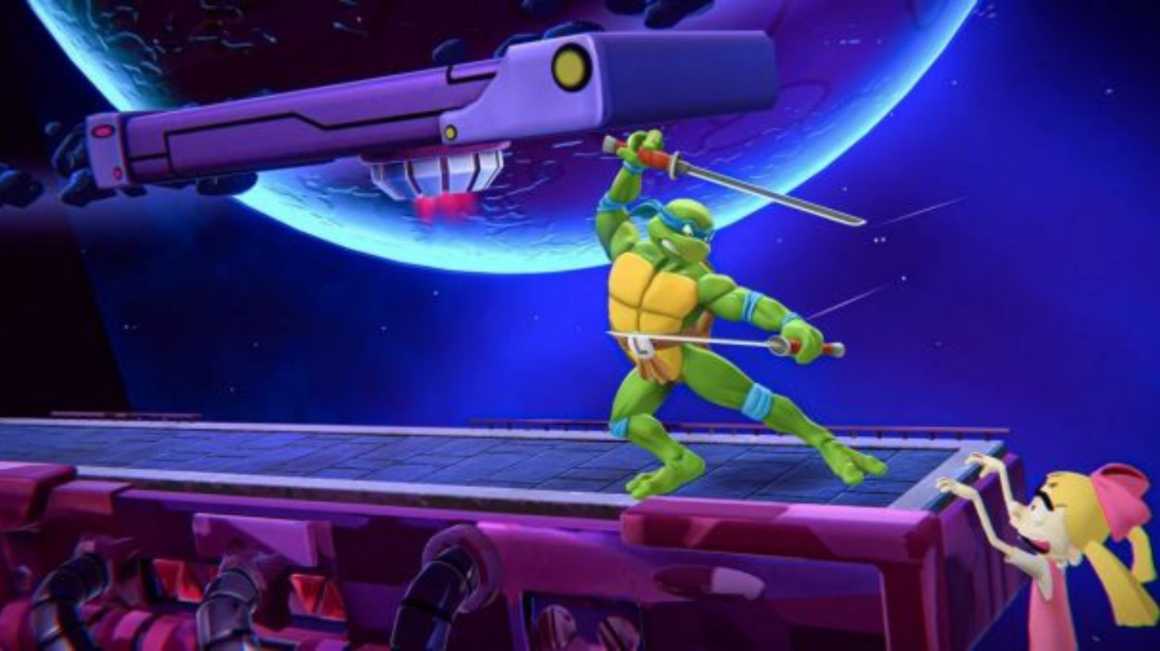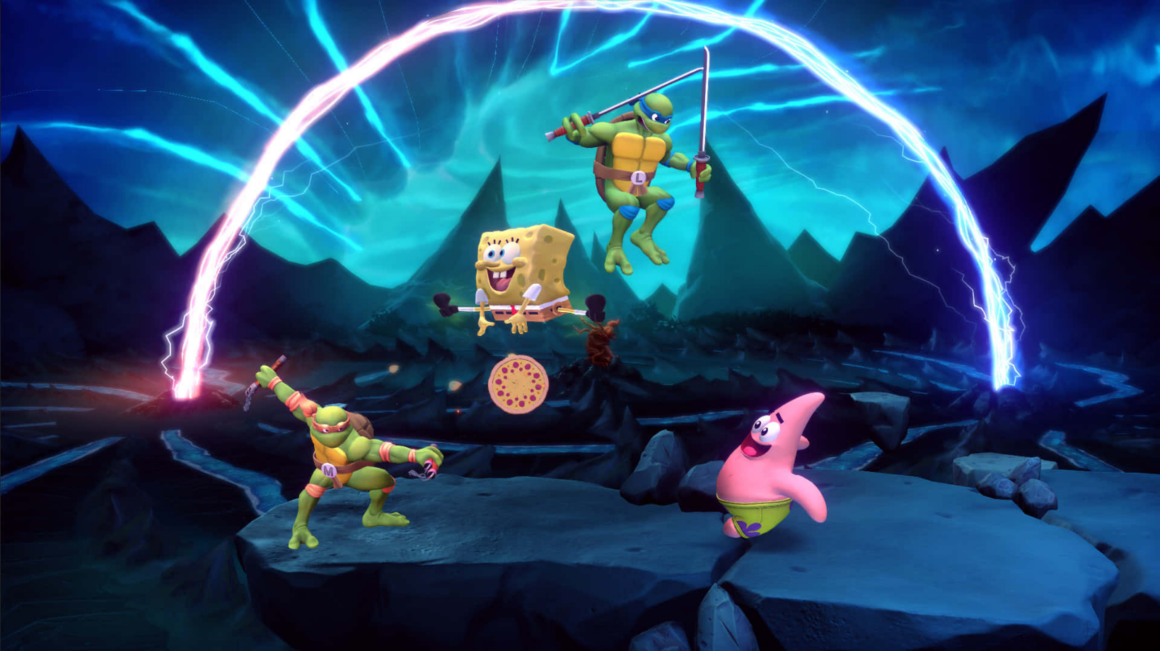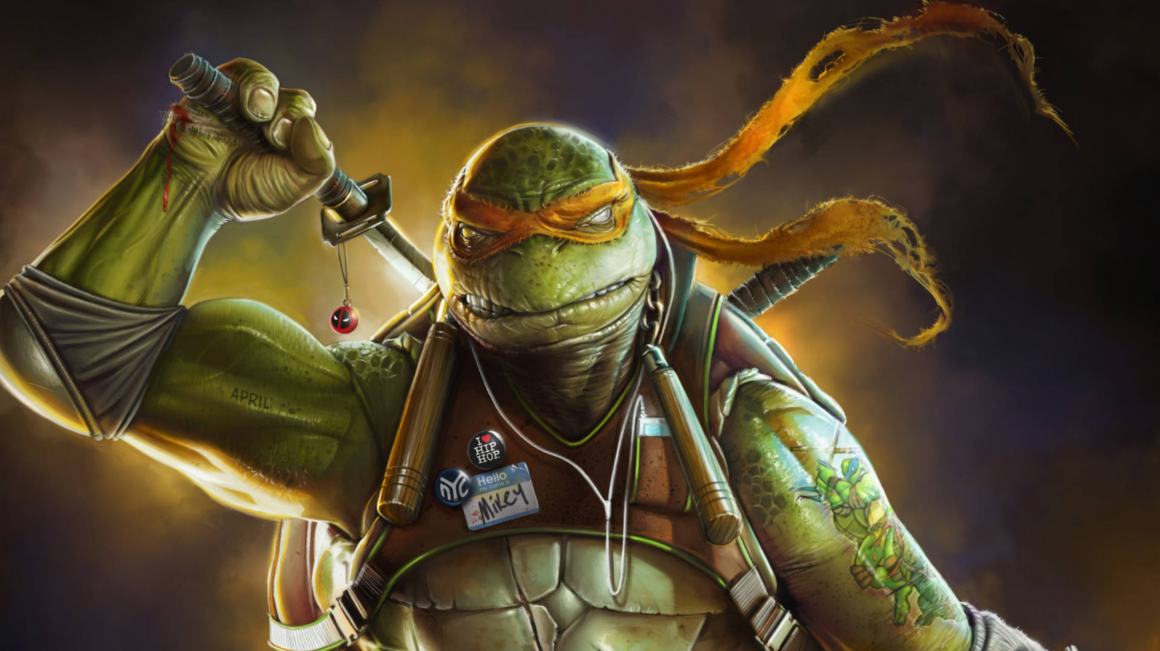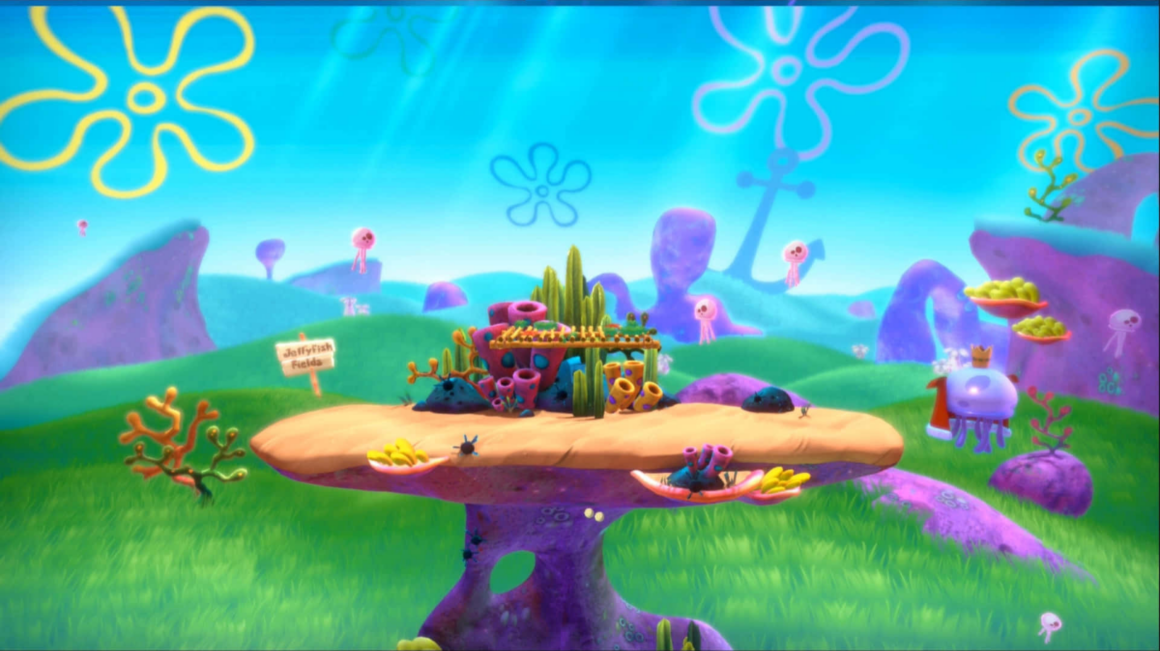In the game, players can choose from a variety of characters and play through a series of matches. Each match has its own objective, such as defeating your opponent or collecting coins to build up your power meter.
Michelangelo, the comical ninja turtle from Nickelodeon All-Star Brawl, may seem to be a difficult character to control due to his limited combo potential, but his fast aerials, powerful heavy strikes, and flexible special abilities make him a well-rounded fighter.
Ground Attacks (Light)

Michelangelo’s light strikes have a lot of knockback; most of them can’t build up combos, but they’re great as combo finishers.
- Michelangelo spins one of his nunchaku in front of him, doing 6 percent damage when it makes contact. This is a good method to either complete a combination or defend a ledge while your opponent tries to recover.
- Light Up Attack: A straightforward uppercut that does 8% damage. This may be utilized to build up air combinations since it knocks opponents higher.
- Michelangelo crawls forward on his knees while playing an air guitar in a light down attack. This move is generally best left undisturbed since it only does 6% damage and has a lot of lag towards the finish, making it tough to get out of.
- Light Dash Attack: Michelangelo collides with his opponent on his skateboard, inflicting 8% damage. This move has a lot of combo potential since it may be swiftly followed up by a strong neutral or heavy down strike. This technique is also especially effective near the edge, since it pushes opponents somewhat below the stage, allowing you to spike them.
Aerial Attacks of a Minor Nature

Michelangelo’s light aerials, especially his downward one, are fast to come out and are essential for building up combinations with this character.
- Michelangelo spins one nunchaku above him and the other in the opposite direction he is facing; each nunchaku does 5% damage on impact, although the two hitboxes differ significantly in knockback. Even at greater percentages, the top nunchaku’s knockback is modest, while the knockback of the other nunchaku climbs progressively as damage rises. If you land this move on a grounded opponent, immediately follow up with a light neutral strike for an 11 percent damage combo.
- Light Down Aerial: Michelangelo uses a downward attack followed by an upward strike to deal 10% damage. This spikes if performed in mid-air, thus this should be your go-to death move after you’ve gotten an opponent off-stage. If you’re dealing with a grounded opponent, follow up with a light up strike, leap, and then execute your neutral aerial for a 23 percent damage combination.
- Light Up Aerial: This is a straightforward upward strike that does 8% damage. This ability sends opponents flying skyward at a diagonal angle behind Michelangelo, thus if used to defend against foes offstage, you may accidentally push them back into the stage. Furthermore, this is a tough move to execute; you should definitely avoid it entirely.
Ground-based assaults

Michelangelo’s heavy strikes are sluggish to appear, but they all provide a significant amount of knockback, making them excellent for finishing off your opponents. The majority of them are best utilized as combo finishes.
- Michelangelo takes a step forward and uses his nunchaku to deliver two strikes, the first of which does 4% damage and the second of which deals 10%. This technique throws opponents upward at a steep angle, allowing for high-percentage off-the-top kills. This move, however, has very significant ending lag, making it extremely simple to punish if you make a mistake.
- Heavy Up Attack: A 16 percent damage backflip kick with a strong KO potential. This move also has a very wide hitbox, allowing you to hit opponents right behind Michelangelo.
- Michelangelo uses his nunchaku to swing down towards the ground, doing 13 percent damage. This attack, like the preceding one, features a large hitbox that hits opponents immediately behind the player.
- Heavy Dash Attack: Michelangelo dashes forward, hurling his hips towards the opponent, doing 10% damage. The hitbox on this strike comes out a bit late, but if you can land it, you can use most of your light and heavy ground attacks to swiftly get out of it.
Aerial Assaults on a Large Scale

Unfortunately, one of Michelangelo’s flaws is that his heavy air strikes are too sluggish to be effective in the air. A well-timed one, on the other hand, may deliver a devastating death blow.
His neutral and down aerial heavy strikes function similarly to those on the ground, but Michelangelo’s heavy upward aerial, which has some very huge hitboxes and does a staggering 28 percent damage, is worth mentioning. Use this against recovering opponents to rapidly rack up damage and perhaps steal a stock.
Specials

Michelangelo’s specials aren’t designed for combinations, but they may help him recover faster while slowing down others.
- Michelangelo throws out a 9 percent damage pizza as a neutral special. This is useful for suppressing recoveries or hindering opponent movement across the stage.
- Up Special: The turtle launches a grappling hook that does 12% damage, but the main goal of this move is to assist you in returning to the stage. Before Michelangelo is reeled in, the hook will catch the cliff. Unfortunately, this technique is simple to counter, particularly for characters like Aang or April O’Neil who have strong ledge-guarding skills, but the following move should help alleviate this problem.
- Michelangelo’s Down Special: Michelangelo spins about on his shell, inflicting minor damage to anybody who comes in contact with him. This move is very useful for Michelangelo’s recovery since you can endlessly jump-cancel out of it, essentially giving Michelangelo unlimited leaps. Simply hit the jump button after beginning your down special to take use of this. Even if you’ve used up all of your leaps, the turtle will jump out of it. Michelangelo has one of the most unexpected recoveries in the game using this technique; he may return to the stage immediately, go up high for an aerial, or even go beneath the stage to recover on the other side.
